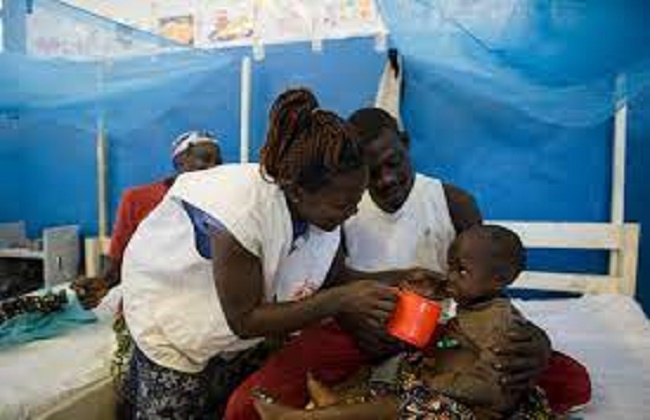
The World Health Organization recently released long-awaited updated guidance on the prevention and management of malnutrition in children, which for the first time includes instruction on both severe and moderate forms.
Devex obtained a copy of the report — the first update in a decade — which was made available on an internal research website but not posted publicly.
WHO is responsible for issuing standards for treatment of all diseases and conditions worldwide. The malnutrition guidelines consider “the best available evidence” and govern how international organizations and health ministries respond to starving children with treatments that include ready-to-use-therapeutic foods, or RUTFs. They also govern who treats children and where — in clinics or at home.
All these factors affect how successful treatment is at saving a starving child’s life, and the guideline update comes as hunger is surging worldwide. An estimated 45.4 million children under 5 years old each year are wasted, the term for children who are severely underweight for their age, which can lead to death. Even amid an unprecedented investment in malnutrition treatment — half a billion dollars was raised last year — the number of affected children has grown.
New in the 2023 guidelines are recommendations dealing with an expanded set of nutritional challenges, which govern support and interventions for mothers and caregivers; help for children under 6 months old who are at risk but have not yet developed wasting; managing moderate acute malnutrition through dietary and clinical treatment; programs to prevent wasting in different contexts; and psychosocial factors that affect care of vulnerable children.
Heather Stobaugh, a global nutrition researcher at Action Against Hunger, called the inclusion of moderate acute malnutrition “a really big step” that acknowledges how high risk those children are.
“There’s a lot more children with moderate wasting, and it can feel overwhelming from a budgetary standpoint. So sometimes national guidelines from ministries of health will just establish guidelines for the severely wasted children,” Stobaugh said.
“But now we just can’t ignore it. Now there will be guidelines from WHO saying ‘these children are malnourished, they’re four times as likely to die than their well nourished counterparts. It needs to be addressed.’”
WHO last issued guidelines for malnutrition treatment in 2008, updating those in 2013. But under the 2019 United Nations Global Action Plan for Child Wasting, WHO committed to updating the treatment guidelines for wasting and acute malnutrition. It called release of the guidelines “a milestone” in the fight against wasting and acute malnutrition.


